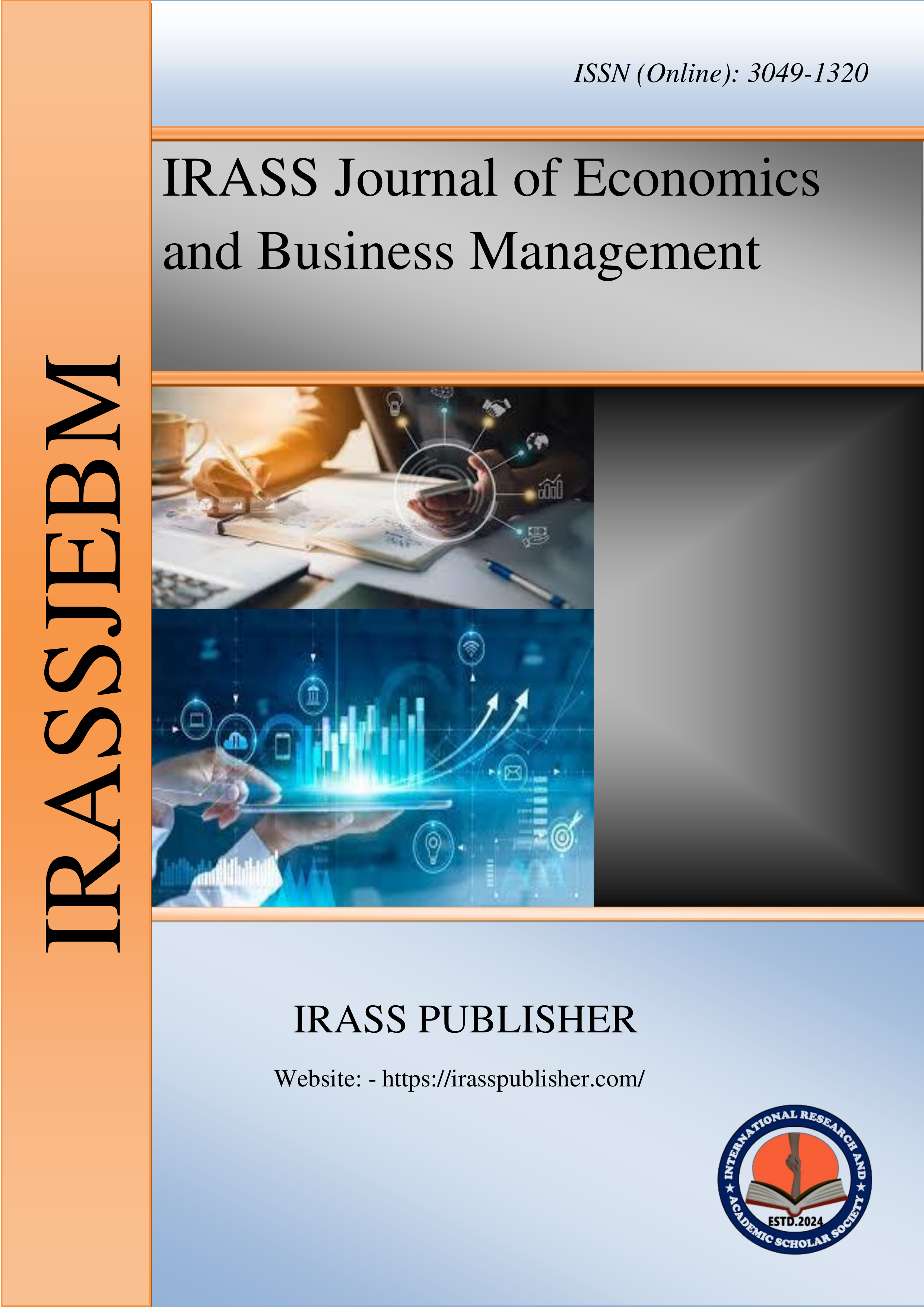Bankruptcy Risk, Debt Service Capacity and Price Performance of Manufacturing Firms: Evidence from Nigeria
Sr No:
Page No:
1-10
Language:
English
Authors:
Asian Asian Umobong, PhD*
Received:
2024-12-14
Accepted:
2024-12-30
Published Date:
2025-01-03
GoogleScholar:
Click here
Abstract:
The objective of research was to determine effect of bankruptcy risk, debt service
capacity on price performance of manufacturing firms listed on Nigeria stock exchange between
2014 and 2023. Cross sectional ex-post facto research design with census sampling method was
adopted. Secondary data was derived from firm financial statements obtained from NSE and
firm websites. Hausaman test for selection of model while diagnosis was carried out using
Ramsey Reset test, Period HeteroTest, Cross-section Hetero Test, Pesaran CD for serial
correlation and Variance Inflation factor for test of multicollinearity. Multiple Regression was
used to determine relationship amongst variables of study. Results revealed Bankruptcy risk has
positively influence market value of shares and the speed which the earnings of the company
are converted to market price. Specifically, BCR and DSC have positive impacts on Tobin Q,
Price earnings ratio, earnings yield and market price. Debt service capacity negatively affects
market value of shares and the speed which firm earnings are converted to market price. There
is a trade-off between bankruptcy risk and debt service capacity. Higher debt service capacity
lowered the risk of bankruptcy. Inflation as a macro-economic factor dampens share prices
whilst at the same time improving speed of conversion of earnings to price. Liquidity
significantly improves Tobin Q while significantly limiting the speed of conversion of earnings
to market price. However, it insignificantly affects market capitalisation and earnings yields.
Based on findings firms should formulate a policy that mediates the positive and negative tradeoff effects of bankruptcy risks and debt service capacity whilst simultaneously monitoring
liquidity to ensure adequacy in meeting maturing obligations and avoiding idle cash flows.
Further, firms should consider impact of inflation while making investment and financing
decisions.
Keywords:
Bankruptcy Risk, Debt Service Capacity, Earnings yield, Price earnings ratio, Market Price, Tobin Q
Journal: IRASS Journal of Economics and Business Management
ISSN(Online): 3049-1320
Publisher: IRASS Publisher
Frequency:
Monthly
Language:
English

